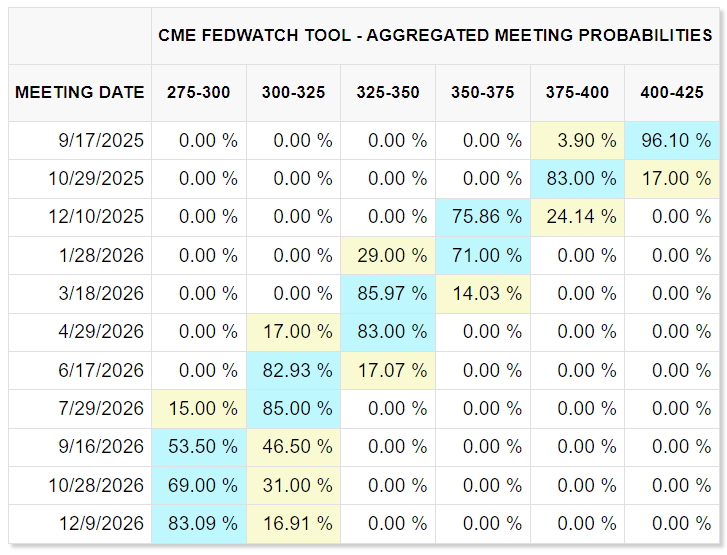Dow Jones Industrial Average trims gains as markets await Fed

- The Dow recoiled on Tuesday, trimming some off the top as investors brace for the Fed’s latest rate call.
- The FOMC has started its two-day interest rate decision process; a rate cut is broadly expected.
- The Fed’s dot plot adjustment will be the key datapoint for markets this week.
The Dow Jones Industrial Average (DJIA) shed 275 points at its lowest on Tuesday as investors buckle down ahead of the latest interest rate decision from the Federal Reserve (Fed). The Federal Open Market Committee (FOMC) will wrap up two days of deliberations on Wednesday and deliver what is broadly expected to be the Fed’s first interest rate cut since pausing rate moves in January.
Rate cuts incoming, but how many?
A quarter-point interest rate cut is widely anticipated this week, but the key datapoint for markets will be the FOMC’s update to its Summary of Economic Projections, or dot plot of policymakers’ own interest rate expectations. Three straight rate cuts through the rest of the year are baked into interest rate markets, and investors will be looking for the Fed to play ball.

US Retail Sales came in much stronger than expected, rising 0.6% for the second month in a row in August. Core Retail Sales also accelerated to 0.7% MoM. However, Retail Sales data doesn’t differentiate between price changes or an actual increase in sales volume. August’s retail data pleased both sides of the interest rate discussion: strong retail activity, coupled with slumping hiring data, gives the Fed more runway to cut interest rates. Meanwhile, the no-cut camp will point to retail upswings to show that a tariff-fueled resurgence of inflation is a real and growing problem within the US economy.
Dow Jones daily chart

Fed FAQs
Monetary policy in the US is shaped by the Federal Reserve (Fed). The Fed has two mandates: to achieve price stability and foster full employment. Its primary tool to achieve these goals is by adjusting interest rates. When prices are rising too quickly and inflation is above the Fed’s 2% target, it raises interest rates, increasing borrowing costs throughout the economy. This results in a stronger US Dollar (USD) as it makes the US a more attractive place for international investors to park their money. When inflation falls below 2% or the Unemployment Rate is too high, the Fed may lower interest rates to encourage borrowing, which weighs on the Greenback.
The Federal Reserve (Fed) holds eight policy meetings a year, where the Federal Open Market Committee (FOMC) assesses economic conditions and makes monetary policy decisions. The FOMC is attended by twelve Fed officials – the seven members of the Board of Governors, the president of the Federal Reserve Bank of New York, and four of the remaining eleven regional Reserve Bank presidents, who serve one-year terms on a rotating basis.
In extreme situations, the Federal Reserve may resort to a policy named Quantitative Easing (QE). QE is the process by which the Fed substantially increases the flow of credit in a stuck financial system. It is a non-standard policy measure used during crises or when inflation is extremely low. It was the Fed’s weapon of choice during the Great Financial Crisis in 2008. It involves the Fed printing more Dollars and using them to buy high grade bonds from financial institutions. QE usually weakens the US Dollar.
Quantitative tightening (QT) is the reverse process of QE, whereby the Federal Reserve stops buying bonds from financial institutions and does not reinvest the principal from the bonds it holds maturing, to purchase new bonds. It is usually positive for the value of the US Dollar.







